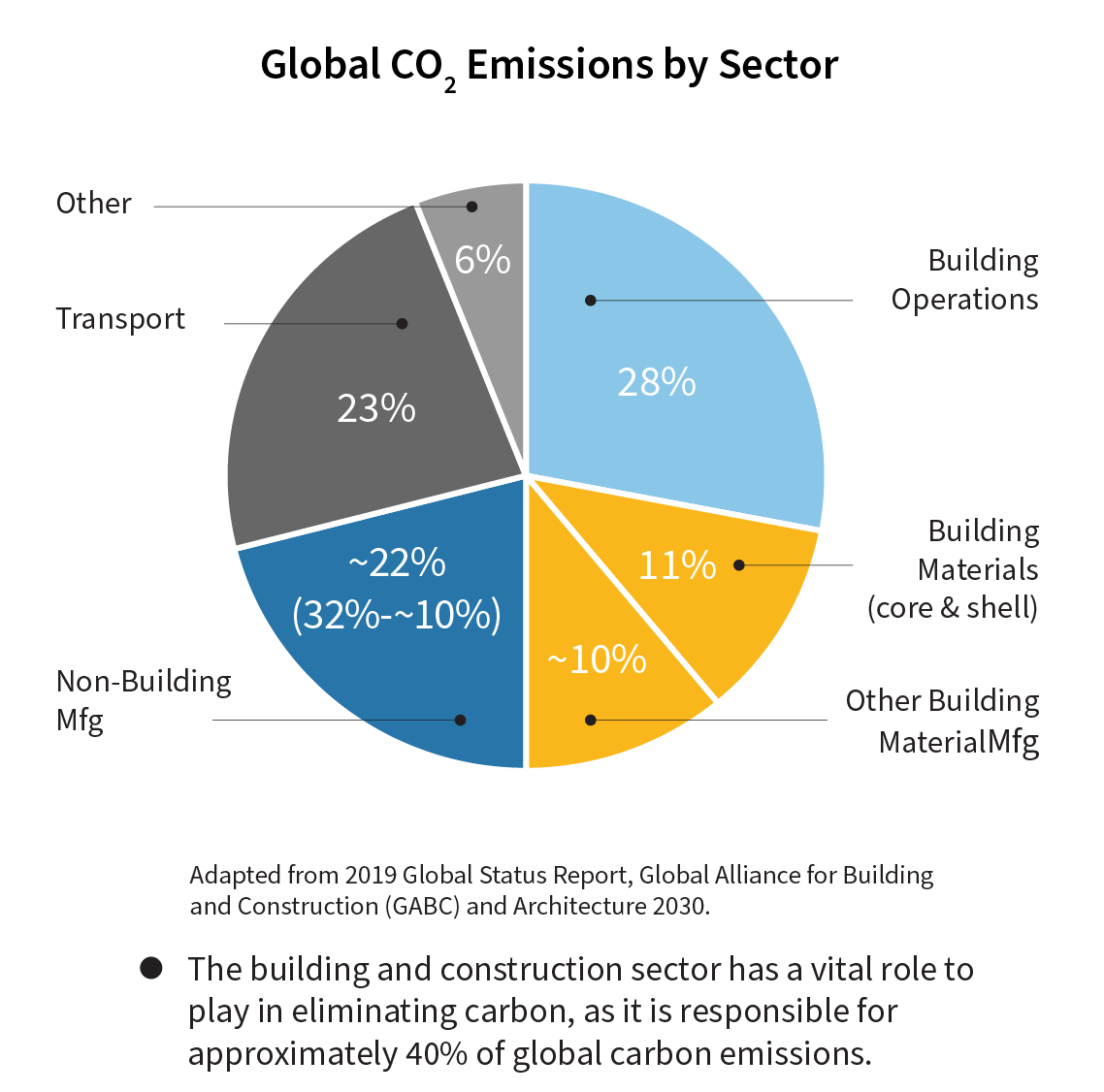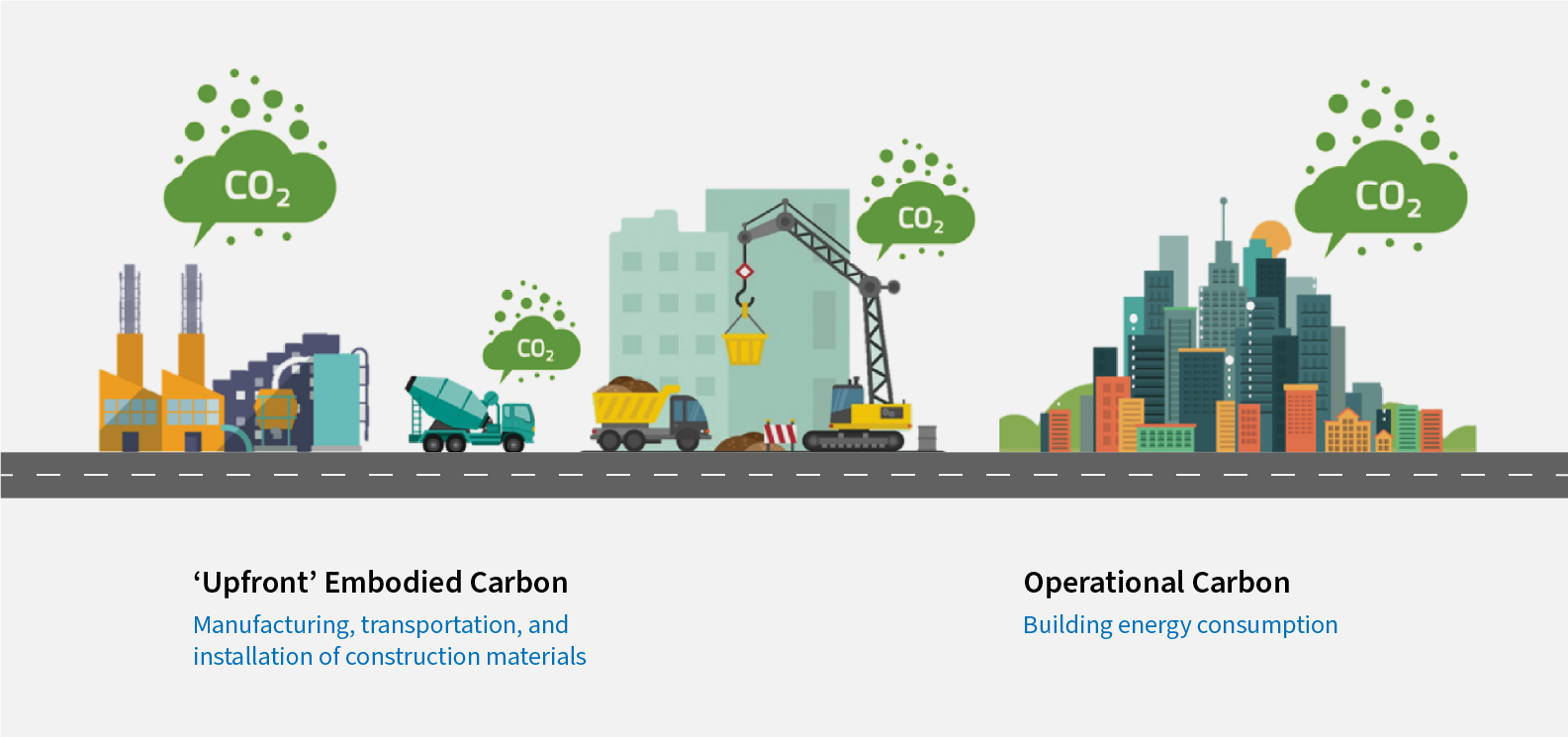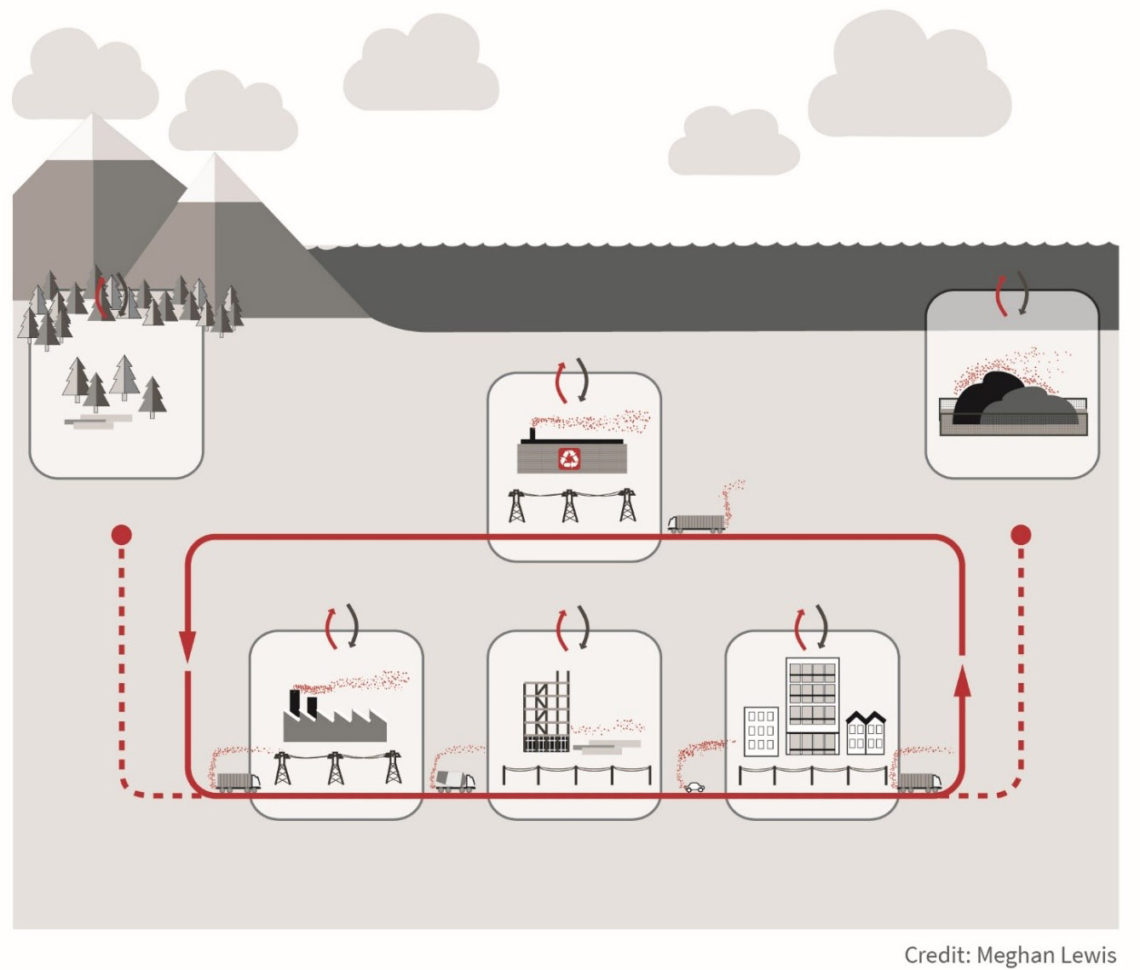Climate, Carbon and the Built Environment
The Impact of Buildings on Carbon Emissions
Globally, the building and construction sectors account for nearly 40% of global energy-related carbon dioxide emissions in constructing and operating buildings (including the impacts of upstream power generation).1 Current building codes address operating energy but do not typically address the impacts of embodied carbon in building materials and products. However, more than half of all GHG emissions are related to materials management (including material extraction and manufacturing) when aggregated across industrial sectors.2 As building operations become more efficient, these embodied impacts related to producing building materials become increasingly significant.
- UNEP and IEA, “Global Status Report 2017: Towards a Zero-Emission, Efficient, and Resilient Buildings and Construction Sector,” 2017.
- OECD, “Global Material Resources Outlook to 2060: Economic Drivers

Carbon Emissions in Buildings:
‘Upfront’ Embodied Carbon and Operational Carbon

The Growing Significance of Embodied Carbon
Between now and 2060 the world’s population will be doubling the amount of building floor-space, equivalent to building an entire New York City every month for 40 years. Much of the carbon footprint of these new buildings will take the form of embodied carbon — the emissions associated with building material manufacturing and construction.1

Unlike operational carbon emissions, which can be reduced over time with building energy efficiency renovations and the use of renewable energy, embodied carbon emissions have irreversibly entered the atmosphere as soon as a building is built.
- Architecture2030. https://architecture2030.org/buildings_problem_why/
- Architecture2030. https://architecture2030.org/new-buildings-embodied/

We invite you to join our coalition of architects, engineers, contractors, materials suppliers, building owners, policymakers and associations committed to radically decarbonizing buildings and building materials.
- Join the Carbon Leadership Forum. Your membership includes a subscription to our Informative Newsletter and membership in our collaborative Online Community.
- Join or start a Regional Hub of the Carbon Leadership Forum.
- Help fund our Research and Initiatives through your Sponsorship.
- Are you an NGO? Learn more about our NGO Roundtable.




